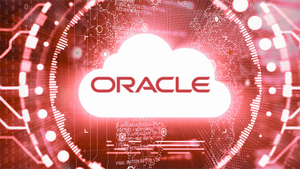
Round Rock, TX – November 18, 2025 – Dell Technologies (NYSE: DELL) today unveiled a sweeping expansion and enhancement of its enterprise AI infrastructure portfolio, anchored by a reinforced, multi-year partnership with Nvidia (NASDAQ: NVDA). Dubbed the "Dell AI Factory with Nvidia," this initiative represents a significant leap forward in making sophisticated AI accessible and scalable for businesses worldwide. The comprehensive suite of new and upgraded servers, advanced storage solutions, and intelligent software is designed to simplify the daunting journey from AI pilot projects to full-scale, production-ready deployments, addressing critical challenges in scalability, cost-efficiency, and operational complexity.
This strategic pivot positions Dell as a pivotal enabler of the AI revolution, offering a cohesive, end-to-end ecosystem that integrates Dell's robust hardware and automation with Nvidia's cutting-edge GPUs and AI software. The announcements, many coinciding with the Supercomputing 2025 conference and becoming globally available around November 17-18, 2025, underscore a concerted effort to streamline the deployment of complex AI workloads, from large language models (LLMs) to emergent agentic AI systems, fundamentally reshaping how enterprises will build and operate their AI strategies.
Unpacking the Technical Core of Dell's AI Factory
The "Dell AI Factory with Nvidia" is not merely a collection of products; it's an integrated platform designed for seamless AI development and deployment. At its heart are several new and updated Dell PowerEdge servers, purpose-built for the intense demands of AI and high-performance computing (HPC). The Dell PowerEdge XE7740 and XE7745, now globally available, feature Nvidia RTX PRO 6000 Blackwell Server Edition GPUs and Nvidia Hopper GPUs, offering unprecedented acceleration for multimodal AI and complex simulations. A standout new system, the Dell PowerEdge XE8712, promises the industry's highest GPU density, supporting up to 144 Nvidia Blackwell GPUs per Dell IR7000 rack. Expected in December 2025, these liquid-cooled behemoths are engineered to optimize performance and reduce operational costs for large-scale AI model training. Dell also highlighted the availability of the PowerEdge XE9785L and upcoming XE9785 (December 2025), powered by AMD Instinct GPUs, demonstrating a commitment to offering choice and flexibility in accelerator technology. Furthermore, the new Intel-powered PowerEdge R770AP, also due in December 2025, caters to demanding HPC and AI workloads.
Beyond raw compute, Dell has introduced transformative advancements in its storage portfolio, crucial for handling the massive datasets inherent in AI. Dell PowerScale and ObjectScale, key components of the Dell AI Data Platform, now boast integration with Nvidia's Dynamo inference framework via the Nvidia Inference Transfer (Xfer) Library (NIXL). This currently available integration significantly accelerates AI application workflows by enabling Key-Value (KV) cache offloading, which moves large cache data from expensive GPU memory to more cost-effective storage. Dell reports an impressive one-second time to first token (TTFT) even with large context windows, a critical metric for LLM performance. Looking ahead to 2026, Dell announced "Project Lightning," which parallelizes PowerScale with pNFS (Parallel NFS) support, dramatically boosting file I/O performance and scalability. Additionally, software-defined PowerScale and ObjectScale AI-Optimized Search with S3 Tables and S3 Vector APIs are slated for global availability in 2026, promising greater flexibility and faster data analysis for analytics-heavy AI workloads like inferencing and Retrieval-Augmented Generation (RAG).
The software and automation layers are equally critical in this integrated factory approach. The Dell Automation Platform has been expanded and integrated into the Dell AI Factory with Nvidia, providing smarter, more automated experiences for deploying full-stack AI workloads. It offers a curated catalog of validated workload blueprints, including an AI code assistant with Tabnine and an agentic AI platform with Cohere North, aiming to accelerate time to production. Updates to Dell APEX AIOps (January 2025) and upcoming enhancements to OpenManage Enterprise (January 2026) and Dell SmartFabric Manager (1H26) further solidify Dell's commitment to AI-driven operations and streamlined infrastructure management, offering full-stack observability and automated deployment for GPU infrastructure. This holistic approach differs significantly from previous siloed solutions, providing a cohesive environment that promises to reduce complexity and speed up AI adoption.
Competitive Implications and Market Dynamics
The launch of the "Dell AI Factory with Nvidia" carries profound implications for the AI industry, poised to benefit a wide array of stakeholders while intensifying competition. Foremost among the beneficiaries are enterprises across all sectors, from finance and healthcare to manufacturing and retail, that are grappling with the complexities of deploying AI at scale. By offering a pre-integrated, validated, and comprehensive solution, Dell (NYSE: DELL) and Nvidia (NASDAQ: NVDA) are effectively lowering the barrier to entry for advanced AI adoption. This allows organizations to focus on developing AI applications and deriving business value rather than spending inordinate amounts of time and resources on infrastructure integration. The inclusion of AMD Instinct GPUs in some PowerEdge servers also positions AMD (NASDAQ: AMD) as a key player in Dell's diverse AI ecosystem.
Competitively, this move solidifies Dell's market position as a leading provider of enterprise AI infrastructure, directly challenging rivals like Hewlett Packard Enterprise (NYSE: HPE), IBM (NYSE: IBM), and other server and storage vendors. By tightly integrating with Nvidia, the dominant force in AI acceleration, Dell creates a formidable, optimized stack that could be difficult for competitors to replicate quickly or efficiently. The "AI Factory" concept, coupled with Dell Professional Services, aims to provide a turnkey experience that could sway enterprises away from fragmented, multi-vendor solutions. This strategic advantage is not just about hardware; it's about the entire lifecycle of AI deployment, from initial setup to ongoing management and optimization. Startups and smaller AI labs, while potentially not direct purchasers of such large-scale infrastructure, will benefit from the broader availability and standardization of AI tools and methodologies that such platforms enable, potentially driving innovation further up the stack.
The market positioning of Dell as a "one-stop shop" for enterprise AI infrastructure could disrupt existing product and service offerings from companies that specialize in only one aspect of the AI stack, such as niche AI software providers or system integrators. Dell's emphasis on automation and validated blueprints also suggests a move towards democratizing complex AI deployments, making advanced capabilities accessible to a wider range of IT departments. This strategic alignment with Nvidia reinforces the trend of deep partnerships between hardware and software giants to deliver integrated solutions, rather than relying solely on individual component sales.
Wider Significance in the AI Landscape
Dell's "AI Factory with Nvidia" is more than just a product launch; it's a significant milestone that reflects and accelerates several broader trends in the AI landscape. It underscores the critical shift from experimental AI projects to enterprise-grade, production-ready AI systems. For years, deploying AI in a business context has been hampered by infrastructure complexities, data management challenges, and the sheer computational demands. This integrated approach aims to bridge that gap, making advanced AI a practical reality for a wider range of organizations. It fits into the broader trend of "democratizing AI," where the focus is on making powerful AI tools and infrastructure more accessible and easier to deploy, moving beyond the exclusive domain of hyperscalers and elite research institutions.
The impacts are multi-faceted. On one hand, it promises to significantly accelerate the adoption of AI across industries, enabling companies to leverage LLMs, generative AI, and advanced analytics for competitive advantage. The integration of KV cache offloading, for instance, directly addresses a performance bottleneck in LLM inference, making real-time AI applications more feasible and cost-effective. On the other hand, it raises potential concerns regarding vendor lock-in, given the deep integration between Dell and Nvidia technologies. While offering a streamlined experience, enterprises might find it challenging to switch components or integrate alternative solutions in the future. However, Dell's continued support for AMD Instinct GPUs indicates an awareness of the need for some level of hardware flexibility.
Comparing this to previous AI milestones, the "AI Factory" concept represents an evolution from the era of simply providing powerful GPU servers. Early AI breakthroughs were often tied to specialized hardware and bespoke software environments. This initiative, however, signifies a maturation of the AI infrastructure market, moving towards comprehensive, pre-validated, and managed solutions. It's akin to the evolution of cloud computing, where infrastructure became a service rather than a collection of disparate components. This integrated approach is crucial for scaling AI from niche applications to pervasive enterprise intelligence, setting a new benchmark for how AI infrastructure will be delivered and consumed.
Charting Future Developments and Horizons
Looking ahead, Dell's "AI Factory with Nvidia" sets the stage for a rapid evolution in enterprise AI infrastructure. In the near term, the global availability of high-density servers like the PowerEdge XE8712 and R770AP in December 2025, alongside crucial software updates such as OpenManage Enterprise in January 2026, will empower businesses to deploy even more demanding AI workloads. These immediate advancements will likely lead to a surge in proof-of-concept deployments and initial production rollouts, particularly for LLM training and complex data analytics.
The longer-term roadmap, stretching into the first and second halves of 2026, promises even more transformative capabilities. The introduction of software-defined PowerScale and parallel NFS support will revolutionize data access and management for AI, enabling unprecedented throughput and scalability. ObjectScale AI-Optimized Search, with its S3 Tables and Vector APIs, points towards a future where data residing in object storage can be directly queried and analyzed for AI, reducing data movement and accelerating insights for RAG and inferencing. Experts predict that these developments will lead to increasingly autonomous AI infrastructure, where systems can self-optimize for performance, cost, and energy efficiency. The continuous integration of AI into infrastructure management tools like Dell APEX AIOps and SmartFabric Manager suggests a future where AI manages AI, leading to more resilient and efficient operations.
However, challenges remain. The rapid pace of AI innovation means that infrastructure must constantly evolve to keep up with new model architectures, data types, and computational demands. Addressing the growing demand for specialized AI skills to manage and optimize these complex environments will also be critical. Furthermore, the environmental impact of large-scale AI infrastructure, particularly concerning energy consumption and cooling, will require ongoing innovation. What experts predict next is a continued push towards greater integration, more intelligent automation, and the proliferation of AI capabilities directly embedded into the infrastructure itself, making AI not just a workload, but an inherent part of the computing fabric.
A New Era for Enterprise AI Deployment
Dell Technologies' unveiling of the "Dell AI Factory with Nvidia" marks a pivotal moment in the history of enterprise AI. It represents a comprehensive, integrated strategy to democratize access to powerful AI capabilities, moving beyond the realm of specialized labs into the mainstream of business operations. The key takeaways are clear: Dell is providing a full-stack solution, from cutting-edge servers with Nvidia's latest GPUs to advanced, AI-optimized storage and intelligent automation software. The reinforced partnership with Nvidia is central to this vision, creating a unified ecosystem designed to simplify deployment, accelerate performance, and reduce the operational burden of AI.
This development's significance in AI history cannot be overstated. It signifies a maturation of the AI infrastructure market, shifting from component-level sales to integrated "factory" solutions. This approach promises to unlock new levels of efficiency and innovation for businesses, enabling them to harness the full potential of generative AI, LLMs, and other advanced AI technologies. The long-term impact will likely be a dramatic acceleration in AI adoption across industries, fostering a new wave of AI-driven products, services, and operational efficiencies.
In the coming weeks and months, the industry will be closely watching several key indicators. The adoption rates of the new PowerEdge servers and integrated storage solutions will be crucial, as will performance benchmarks from early enterprise deployments. Competitive responses from other major infrastructure providers will also be a significant factor, as they seek to counter Dell's comprehensive offering. Ultimately, the "Dell AI Factory with Nvidia" is poised to reshape the landscape of enterprise AI, making the journey from AI ambition to real-world impact more accessible and efficient than ever before.
This content is intended for informational purposes only and represents analysis of current AI developments.
TokenRing AI delivers enterprise-grade solutions for multi-agent AI workflow orchestration, AI-powered development tools, and seamless remote collaboration platforms.
For more information, visit https://www.tokenring.ai/.





